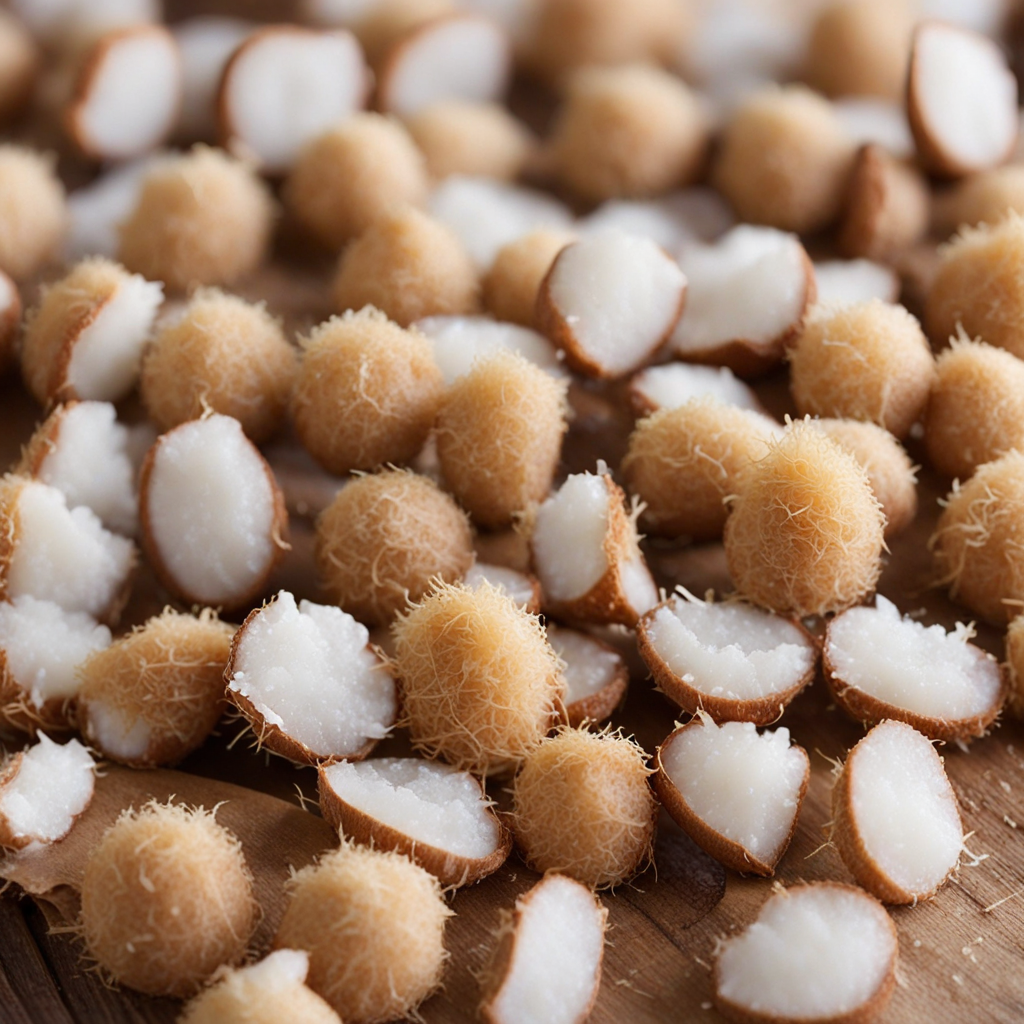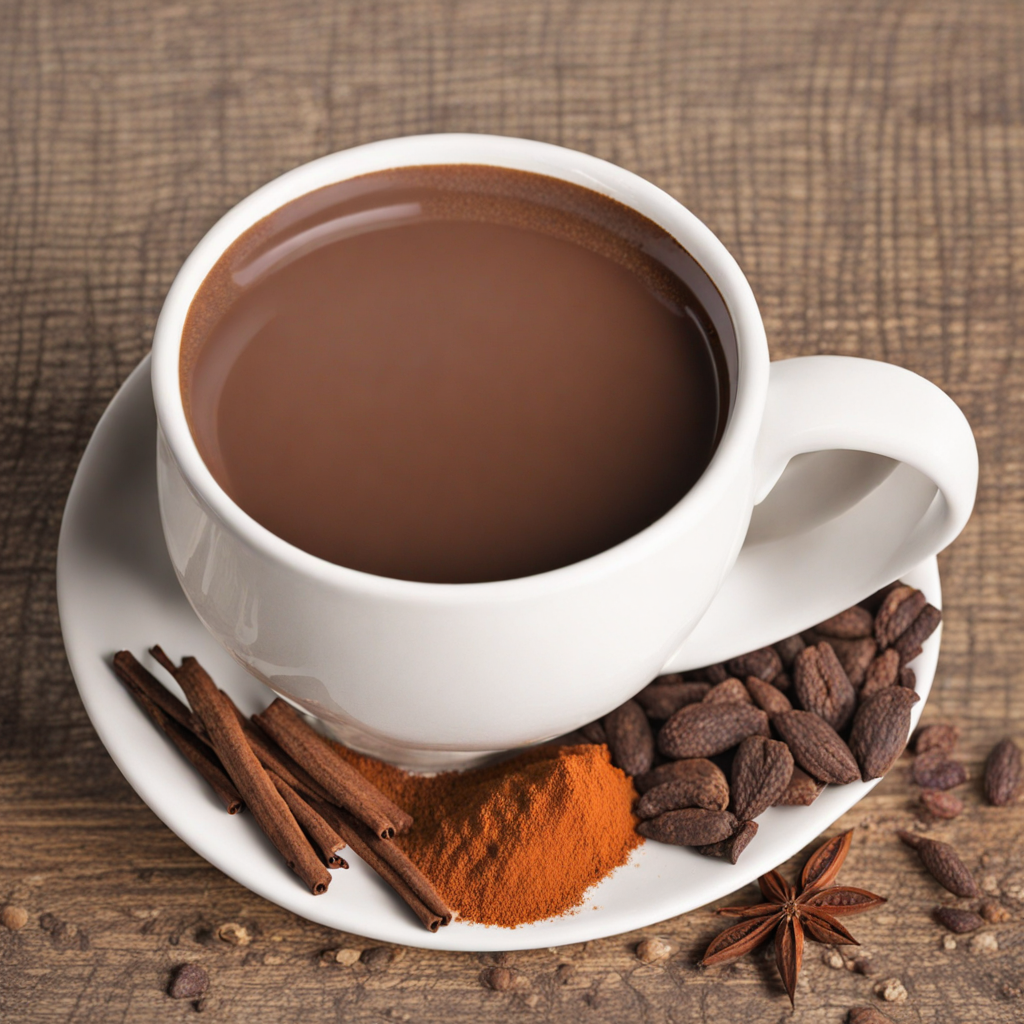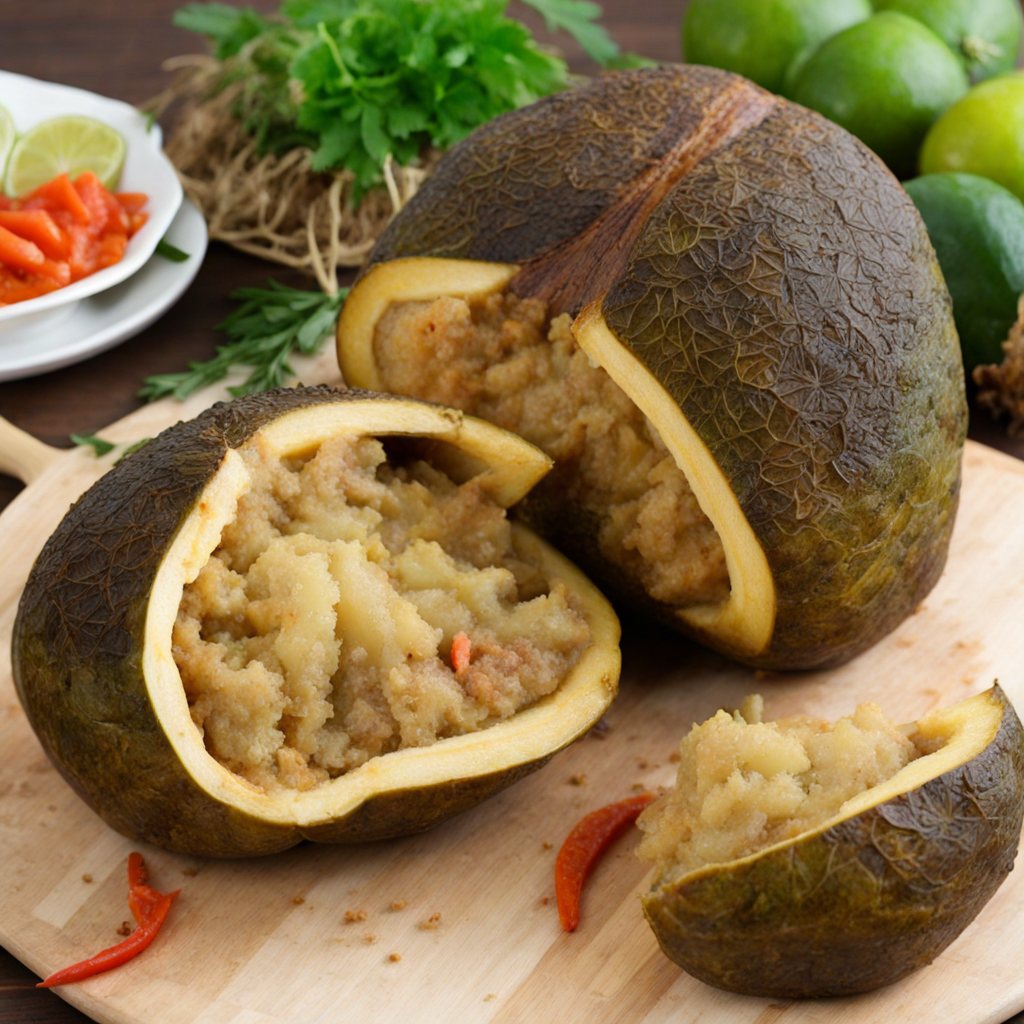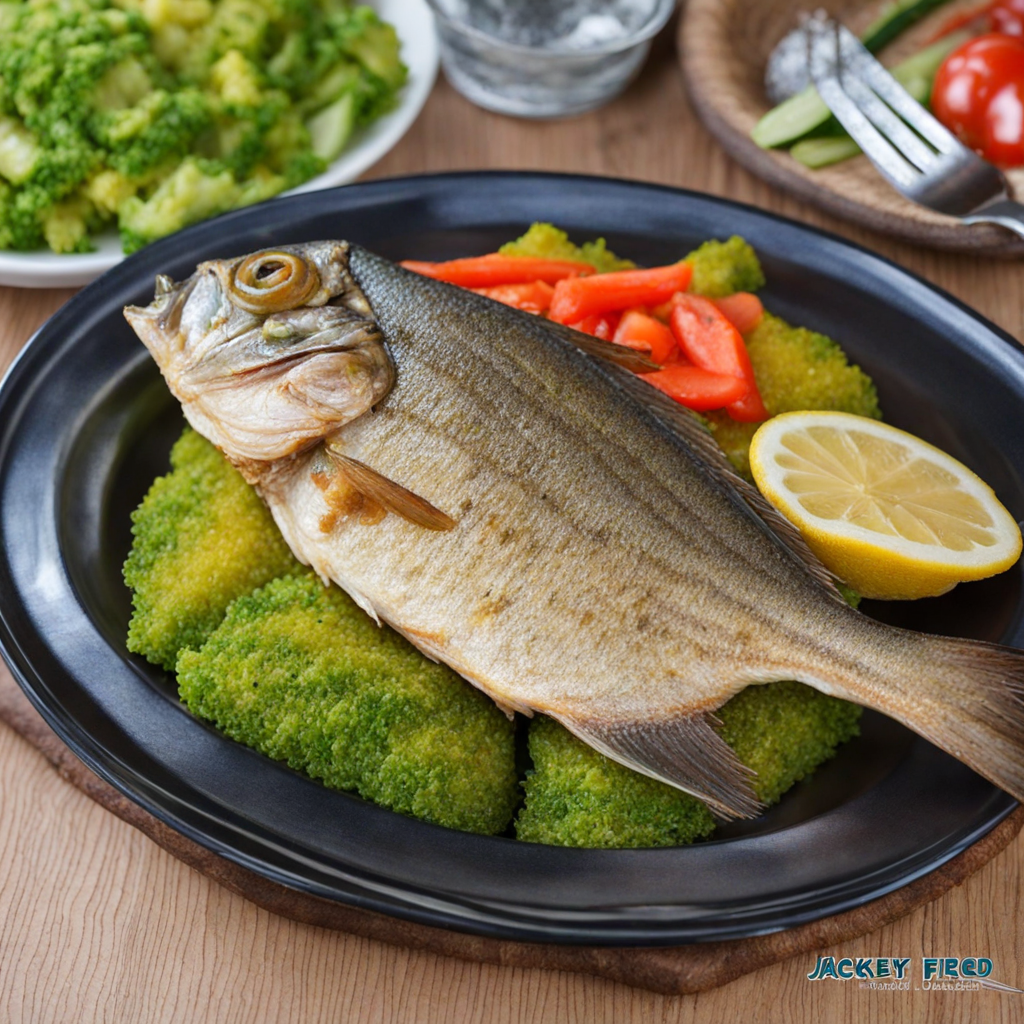Coconut Drops
Coconut Drops are a beloved treat from Dominica, characterized by their delightful combination of sweet and chewy textures. Made primarily from freshly grated coconut, these drops are often mixed with sugar, flour, and a hint of vanilla or nutmeg, creating a rich and aromatic flavor profile. The ingredients are combined into a sticky dough, which is then shaped into small, round drops before being baked to perfection. The result is a golden-brown exterior that gives way to a soft, moist center, making each bite a heavenly experience for coconut lovers. The natural sweetness of the coconut shines through, while the addition of spices like nutmeg adds a warm, fragrant note that enhances the overall flavor. Each Coconut Drop carries a taste of the tropics, evoking images of the lush landscapes of Dominica. The chewy texture paired with the slight crunch on the outside makes them not only delicious but also fun to eat, inviting you to savor each piece slowly. Often enjoyed as a snack or dessert, Coconut Drops are perfect for any occasion, whether you’re enjoying them at home or sharing them with friends. They also make for a wonderful treat to accompany a cup of tea or coffee. These delightful bites are not just a simple confection; they are a taste of Dominican culture, bringing the warmth of the island into your kitchen with every batch you make.
How It Became This Dish
The Sweet Journey of Coconut Drops: A Culinary Treasure from Dominica Coconut Drops are a beloved confectionery from the Caribbean island of Dominica, known for their simple yet delightful flavor that captures the essence of the island's tropical bounty. These chewy, sweet treats are made primarily from fresh grated coconut, sugar, and spices, often with the addition of flour to bind the mixture. Their delightful taste and texture make them a popular snack and dessert, but their significance transcends mere culinary delight, embodying the rich cultural tapestry of Dominica. #### Origins The origins of Coconut Drops can be traced back to the indigenous peoples of the Caribbean, particularly the Kalinago (Carib) and Arawak tribes, who were among the earliest inhabitants of Dominica. These communities had a profound understanding of their natural environment and utilized coconuts for various purposes, from food to shelter. The coconut palm is often referred to as the "tree of life," as it provides an array of resources essential for survival. As European colonization began in the 15th and 16th centuries, the culinary practices of the Indigenous people began to blend with those of the European settlers, particularly the French and British. The introduction of sugarcane plantations in the Caribbean during this period marked a significant agricultural shift and led to the widespread cultivation of sugar, which became a vital export for many islands. Sugar and coconut were natural companions, and the creation of sweet coconut confections, such as Coconut Drops, emerged as a practical and delicious way to use these ingredients. #### Cultural Significance Coconut Drops are more than just a treat; they are an emblem of Dominican cultural identity. The preparation and sharing of these sweets are often intertwined with festive occasions, family gatherings, and community events. The act of making Coconut Drops is typically a communal affair, where families come together to grate coconuts, mix ingredients, and share stories. These gatherings foster a sense of unity and belonging, reinforcing the importance of family and community in Dominican culture. The use of local ingredients in Coconut Drops also reflects the island’s agricultural heritage. Dominica is known for its lush landscapes, abundant with tropical fruits and vegetables. The coconut palm flourishes in this environment, and its prominence in local cuisine speaks to the resourcefulness of the islanders. The incorporation of spices, such as nutmeg and vanilla, further highlights the island's rich biodiversity and the influence of various cultures on its culinary landscape. Coconut Drops have also found their place in the celebration of Caribbean festivals. During events such as Carnival, Independence Day, and local fairs, these treats are often sold by vendors and enjoyed by locals and tourists alike. They serve as a reminder of the island's cultural resilience, as Dominican foodways continue to thrive amidst globalization and the increasing popularity of international cuisines. #### Development Over Time As time passed, the recipe for Coconut Drops evolved, reflecting changes in culinary practices and the availability of ingredients. Traditionally, these confections were made using simple techniques that relied on manual labor, with coconuts grated by hand and mixed in large bowls. However, as technology advanced, so too did the methods of preparation. The introduction of electric graters and mixers made the process more efficient, allowing for larger batches to be produced. In contemporary Dominica, Coconut Drops can be found in a variety of forms, from traditional recipes passed down through generations to innovative variations that incorporate modern twists. Some cooks add ingredients such as chocolate, dried fruits, or nuts to the mixture, creating new flavor profiles while still honoring the original essence of the treat. Bakeries and local markets often feature these variations, catering to both local tastes and the adventurous palates of tourists. Moreover, the rise of the global food movement has spurred interest in traditional Caribbean foods, including Coconut Drops. Chefs and food enthusiasts from around the world have begun to explore the distinctive flavors of Dominica, leading to a resurgence in the popularity of local recipes. This exposure has not only introduced Coconut Drops to a broader audience but has also encouraged young Dominicans to take pride in their culinary heritage. The increasing emphasis on sustainability and local sourcing has also impacted the production of Coconut Drops. Many artisanal producers now prioritize using organic ingredients and supporting local farmers. This commitment to sustainability resonates with the island's ethos, as Dominica is renowned for its natural beauty and biodiversity. The movement towards eco-friendly practices reflects a growing awareness of the importance of preserving the environment while celebrating culinary traditions. #### Conclusion Coconut Drops are more than just a sweet treat; they are a cultural artifact that embodies the history, resilience, and creativity of the people of Dominica. From their indigenous roots to their contemporary adaptations, these confections tell a story of cultural blending, community, and the celebration of local ingredients. As the world becomes more interconnected, the importance of preserving and sharing culinary traditions becomes paramount. Coconut Drops stand as a testament to the enduring spirit of Dominica, inviting all who taste them to partake in the island's rich heritage and vibrant culture. In every bite of a Coconut Drop, one can savor the sweet history of Dominica—a history shaped by the land, the people, and the coconut tree, which continues to be a vital part of life on this enchanting island. Whether enjoyed at a festive gathering or as a simple snack, these delightful treats serve as a reminder of the power of food to connect us to our past and to one another.
You may like
Discover local flavors from Dominica







